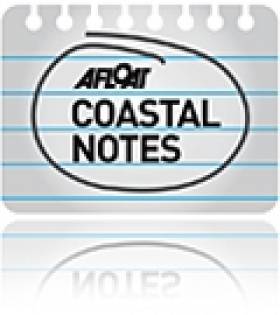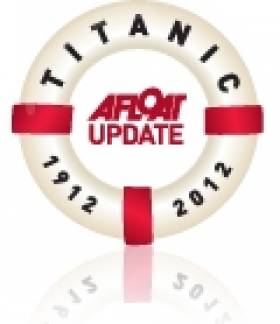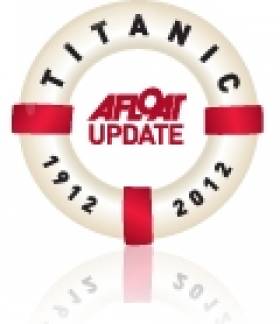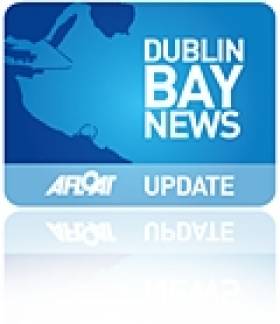Displaying items by tag: Maritime Institute of Ireland (M.I.I.)
Grand Concert to be Aired In former Church
#GrandConcert- Musicians at the dawn of their careers, are to join some of the most experienced performers in Ireland, next Thursday (24 January) in the National Maritime Museum of Ireland, once a place of worship for Church of Ireland parishioner's in Dun Laoghaire.
Performers are Norah O'Leary On Cello – Brahms, Bach and Massenet
On Song -Soprano – Sophie O'Carroll and Tenor – Phillip Scott, Thomas Moore and Gershwin Caro Mio Bene, I hear you calling me, Kerry Dance at the Midnight Hour – Someone to watch over me.
EvelinaNdlovu – On Piano- 3 Argentine Dances Flute Quartet
Two pieces by George Gershwin:
Oh, Lady Be Good, Sweet and Low Down, Easy Winners – Scott Joplin
Overture to The Marriage of Figaro
"Scherzo" from "A Midsummer Night's Dream" Felix Mendelssohn
The Grand Concert starts at 7.30pm, where an admission of €10.00 is payable at the door.
Lecture: “Lady Nelson” Lost on the Skelligs
#LECTURES – In addition to the Killiney & Ballybrack Historical Society's hosting of a lecture about the "Lady Nelson" (on 14 Nov) recently reported on Afloat.ie, the talk will also be hosted this month by the Maritime Institute of Ireland (M.I.I.).
Jim Robinson will present the M.I.I. lecture on 15th November (8pm) about the vessel that traded between Dublin and Spain and in which was wrecked on the Skelligs Rock in 1809. The talk will also give an account of trading links with Spain during that time.
The lecture is to be held at the Stella Maris Seafarers Club, Beresford Place, close to the LUAS (Red) Line (Busaras Stop) and the DART stations (Connolly and Tara Street). Car parking is available at the Irish Life Mall on Lower Abbey Street.
Please note that other lectures organised by the M.I.I. may be held in other locations, for more visit www.mariner.ie
Maritime Museum Breaks Tradition with Monday Opening
#MUSEUM MONDAYS – Another national museum in Ireland has opened it doors to the public on Mondays, as is the case of the National Maritime Museum of Ireland in Dun Laoghaire, writes Jehan Ashmore.
The inaugural Monday opening took place at the end of last month and the extension of opening days continues at least throughout the summer months.
Only in June the museum was officially re-opened by President Michael D. Higgins. The musuem had been closed for several years due to essential renovation works costing €4m. A development programme was also implemented with funding from volunteers and government grants.
The premises of the museum are housed in the former Mariners Church on Haigh Terrace, which leads off Dun Laoghaire's main shopping thoroughfare on Georges Street. The museum is operated by the Maritime Institute of Ireland (M.I.I.) and has the invaluable support of a Community Employment Scheme of the Department of Social Protection.
With the new opening hours the museum is open seven days a week from 11am to 5pm. For further information on the M.I.I.'s museum and events visit: www.mariner.ie
Music & Talk Tribute to Titanic
#TITANIC – The Maritime Institute of Ireland is to host a musical tribute and illustrated talk to mark the centenary of the Titanic shipping disaster. The evening event (starting at 8pm) is to be held on Thursday 12th April in the Maritime Museum, Dun Laoghaire.
The musical tribute will be led by uillinn piper Eamon Galdubh – similar music to that played in the 2nd and 3rd class compartments on the Titanic. The illustrated talk will be presented by well-known deep sea diver Rory Golden, the first Irishman to see the wreck of the Titanic. He was also the first person to touch the ship's wheel since the ship's Captain did in 1912.
Tickets for the event are available at €10 each (concessions €5) from Costello Jewellers, 1 Northumberland Avenue, Dun Laoghaire. In addition tickets can be purchased from the museum which is to reopen to the public next week on Tuesday 3rd April. For more visit www.mariner.ie
Maritime Institute's Museum to Host 'Titanic Centenary' Presentation
#TITANIC-The Maritime Institute of Ireland is to hold a 'Titanic Centenary' event in their maritime museum, Dun Laoghaire on Thursday 12th April (starting at 8pm) noting doors open from 7.30pm.
The first Irish diver to see the wreck from a Russian MIR submersible, Rory Golden will provide an illustrated talk on the latest revelations through an audio-visual presentation. Golden's first Titanic experience was on an expedition in 2000, which yielded hundreds of artefacts.
To ensure a place of the ticketed event, bookings can be made from Linda from the maritime museum's shop Tel: 01 214 3964 (on the top floor of the Dun Laoghaire Shopping Centre) as the museum itself is not due to re-open until early April as previously reported on Afloat.ie.
Alternatively tickets can be booked at Costello Jewellers, 1 Northumberland Avenue, Dun Laoghaire Tel: 01 230 2311 (messages) and Barney Yourell, Lectures Officer of the institute by calling Mob: 087 900 7466. Tickets cost €10 each and concessions for senior citizens and unwaged etc are priced at €5. For further information contact Mob: 086 074 5402 and by visiting www.mariner.ie
Dun Laoghaire's Maritime Museum to Re-Open
#MARITIME MUSEUM-The much awaited re-opening of the Maritime Museum in Dun Laoghaire, Co. Dublin is to take place in April, writes Jehan Ashmore.
The museum which is near to Dun Laoghaire Harbour's East Pier, is to reopen on Tuesday 3rd April between 11am t- 5pm. Throughout the season, these same visiting hours apply Tuesdays to Sundays, though the museum will be closed on Mondays.
To read more about the initial exhibits on display (click HERE) in the apt surroundings of the former Mariners Church, where major and essentail renovation work took place over several years. The museum which is run by the Maritime Institute of Ireland (M.I.I.) celebrated its 70th anniversary last year and with the reopening they can now look forward to a new and exciting era.
Located on High Terrace, a Cul-de-Sac that links the town's main shopping thoroughfare on Georges Street Upper to The Metals, the pedestrian walkway –is only minutes away from the Dun Laoghaire DART station.
Car parking is limited in the immediate vicinity though there are car-parking facilities nearby in the Pavilion which is accessed along the harbour waterfront (Queens Road) and the Dun Laoghaire Shopping Centre approached from Marine Road.
In addition to visiting the museum the M.I.I. also welcome members and volunteers to assist in hosting lectures, producing newsletters, journals, a library, hosting and supporting commemorations in addition to conducting research and highlighting Irelands maritime heritage. For further information click HERE.
- Dublin Bay News
- Dun Laoghaire Harbour News
- Dun Loaghaire Harbour
- Mariners Church Dun Loaghaire
- Maritime Institute of Ireland (M.I.I.)
- M.I.I.
- Dun Laoghaire Shopping Centre
- Pavillon Car Parking
- The Metals
- Dun Laoghaire DART station
- Dun Laoghaire Harbour''s East Pier
- East Pier, Dun Laoghaire
- Irish maritime heritage
- Irish maritime museums
Screening Shown of Unique Lives Lost at Sea Ceremony
#MARINERS WITH MEMORIES – At the weekend representatives of the maritime community, relatives and visitors alike attended a screening of the 'Mariners with Memories' ceremony, which was shown in the Maritime Museum, Dun Laoghaire.
The ceremony which took place in Bray Harbour last July, is unique in that it recognises to all those lost to sea throughout the world and especially to those whose grave is the sea.
Shot by Colm Fynes, the film documented the day's proceedings with tributes made at the Co. Wicklow harbour and the flotilla that followed with floral tributes carried out close to the shore.
Captain Tony O'Grady who organised the Mariners with Memories ceremony, thanked all those to the museum and the support of the Maritime Institute of Ireland, whose newly renovated museum was a particularly apt venue, being the former Mariners Church.
Some of the relatives who attended the memorial event in Bray were also at the Dun Laoghaire screening and where they gave moving tributes to loved ones.
Commenting on the poignancy of the screening, Captain O'Grady referred to the on-going tragic events in Glandore Harbour and off the Italian island of Giglio.
He added that those involved in the various services off the West Cork fishing harbour would of liked to have attended but given the circumstances, all the resources were required at the scene.
It is hoped that following the inaugural ceremony, that Mariners with Memories will become an annually held event and the close relationship with the museum continues.
The museum which was especially opened for the screening will remain closed throughout the winter months though is open on an invitation only basis. Officially the museum is due to re-open this Easter, to keep posted of further developments visit www.mariner.ie
Screening to Mark ‘Mariners with Memories’
#MARITIME MUSEUM - A video recording of the 'Mariners with Memories" wreath-laying ceremony held at sea off Bray last year, is to take place tomorrow afternoon (at 14.30) in the maritime museum in Dun Laoghaire.
The ceremony which was held on 30 July involved a flotilla off Bray Harbour where floral tributes were made to commemorate all those lost at sea especially those whose last resting place is the sea which claimed their lives.
In addition the video presentation will also mark the 70th anniversary of the formation of Irish Shipping Ltd in 1941 and the founding of the Maritime Institute of Ireland (M.I.I.) which was also established in that year.
Copies of the D.V.D. will be available on request R.S.V.P. to this email: [email protected]
The institute aims are to foster an appreciation of the nation's maritime heritage and the museum which is located in the former Mariners Church. The museum has been closed for several years due to essential renovation, though is open on an invitation only basis during this winter. It is due to be officially re-opened in Easter of this year.
Activities of the M.I.I. (which is open to members) include running a winter/spring lecture programme, newsletters, a library, research and the hosting and supporting of commemorations.
For more information including how you can support them as a volunteer click HERE
Lecture: ‘French Naval Expeditions to Ireland’
Lecture: Liffey Ships and Shipbuilding
The lecture starts at 8pm and is held in the Stella Maris Seafarers' Club, Beresford Place and is located beside Busaras and faces opposite the rear of the Customs House. The club is also close to the Irish Life Center (ILAC) which is convenient for car-parking and buses, the 'Red' Luas (Busaras stop) and DART at Connolly /Tara St. stations.
All are Welcome, bar and refreshments and a voluntary contribution is appreciated. Further lectures will be held throughout the winter, mostly on the third Thursday of each month and in the Stella Maris. For further information, Maritime Institute of Ireland (M.I.I.) website www.mariner.ie






































































